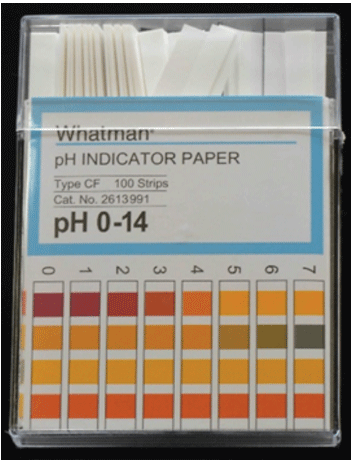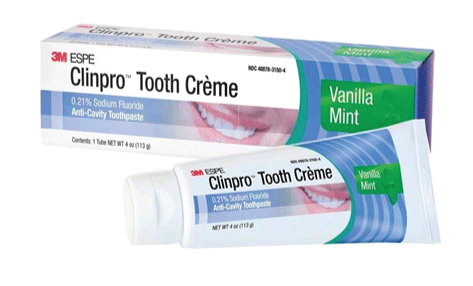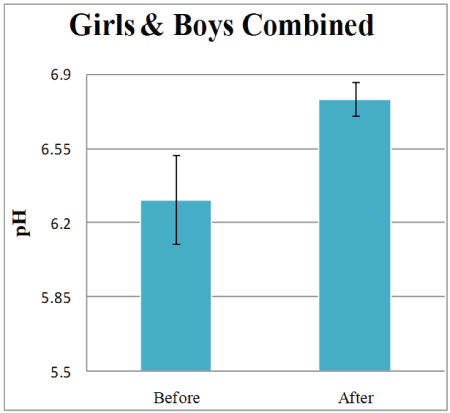
Figure 1: Whatman℗ Maldupa I (2011) (pH range 0-14).


Al-Shammari Shadin1 Melfi Rawan1 Helal Sherif2* Al-Auti Razan1 Dawood Munira1
1Riyadh Elm University REU, Riyadh, Kingdom of Saudi Arabia*Corresponding author: Helal Sherif, Assistant Professor for Pediatric and Community Dentistry, Riyadh Elm University REU, Riyadh, Saudi Arabia, Tel: +9665667749; E-mail: drsherifhelal@netscape.net
Objective: Re-mineralization process may be hindered by the acidic chemo-dynamic theory of saliva. Tri-calcium phosphate toothpaste; evidenced with improved enamel re-mineralization effectiveness but little studies available regard their acidic medium challenge; meanwhile, many studies in Saudi Arabia reported high children caries prevalence respondents to low salivary buffer values.
Method: Random primary school from Riyadh City, KSA selected for the study. A sample of 85 schoolchildren ages 6-8 years old passed the trial with the exemption for those suffering from any systemic illness or using any medication from the study. Ethical clearance was obtained from their parents. Subjects refrained from food or drink for 30 minutes prior to experiment commencement to avoid carryover effect from previous saliva stimulation. Un-stimulated saliva sample ~5ml. in polypropylene vials were collected for pH-value assay, using chair-side colorimetric paper strips indicator Whatman℗ Maldupa I (2011) (pH range 0-14) directly before, and 2 minutes after supervised tooth brushing with pea-sized dentifrice 3M Clinpro™ Tooth Creme (0.21% w/w Sodium Fluoride with Tri-Calcium Phosphate) placed on tooth brushes. Calibration considered with pH 4, 7 and 9 readings according to manufacture standard strip.
Results: T-test showed a significant difference (p<0.05) between before and after brushing (m=0.47 ± SD=1.15).
Conclusion: Results from this study may suggest f-TCP additive significantly improves re-mineralization capacity of fluoride preparations, even in low salivary pH children communities who are identified as “caries risk”.
This study aims to test the potency of F-TCP on salivary pH alterations in primary school children in Riyadh, KSA.
Dental caries are globally rendered as one of the most frequently occurring oral diseases affecting 60-90% of schoolchildren and almost 100% of adults worldwide (WHO, 2012). Maintaining a thorough understanding on caries and its effect on children allows Saudi Arabian stakeholders to take necessary action to control caries occurrence and better the overall oral health of Saudi children [1]. Topical fluoride is a term for delivery systems that exposed the surface of the dentition at increased concentration, for local protective results. The most regularly modalities used at present is Fluoride containing toothpastes, mouth rinses, gels and varnishes [2].
Awareness to the public health is necessary to evaluate oral health at the population level. There must be three important factors which are knowledge, attitudes and behavior [3]. As to ensure the oral health of a society, clinicians must provide appropriate dental facilities, and local communities need to have access to dental care services [4].
The development of caries is dependent on several ingredients, which include; elevated bacterial counts of mutant streptococci (MS) and lactobacillus (LB) in dental plaque, consumption of sugar-filled and carbohydrate-based foods, along with vulnerable/susceptible teeth [5]. Numerous studies have also shed light on the significance of saliva in maintaining the integrity of the oral cavity. Saliva flow in the mouth at any given time is called whole saliva and it involves a mixture of secretions from the major and minor salivary glands and traces from the gingival crevicular fluid. Saliva certainly helps oral health and the lack of its secretion contributes to the disease activates [6,7]. The saliva contains three main buffers, the carbonic acid/ bicarbonate being the major one, normally active in stimulated saliva and works to neutralize the acidic oral environment created as a result of postconsumption bacterial metabolism of sugars. Given that the normal salivary pH range is between 6.7-7.2, values outside the range would reflect an alteration in its Buffering Capacity (BC). Lower pH values would hinder the process of enamel re-mineralization, ultimately providing favorable conditions for caries to onset [8]. Hence, the physiochemical properties of the salivary media, such as its pH and BC add crucial value to estimating the prevalence of developing caries in children and adults alike.
On a national level, studies performed in the Kingdom of Saudi Arabia (KSA) have verified the strong relationship between the incidence of caries and salivary of BC, where respondents of low BC showed a relatively high occurrence of caries [5]. It has also been estimated that the prevalence of dental caries and its severity in Saudi children to be ± 80% for children with primary dentition with a mean decay, missing, filled teeth (dmft) index of 5.0, while a proportion of ± 70%, holding a mean DMFT score of 3.5 was estimated for children with permanent dentition [9-12]. Moreover, dmft values of schoolchildren of 6-8 years of age appear to be increasing progressively from 1982 to 2002.
Dentifrices with active ingredients, such as Functionalized Tricalcium Phosphate (fTCP) (3M ESPE ClinPro™ Tooth Creme), have taken surge for enamel and dentine re-mineralization [13] fTCP is an innovative calcium-based additive that increases the bioavailability of calcium and phosphate ions in order to facilitate re-mineralization [14,15]. According to the mineral precipitation theory, calcification occurs when pH is high enough to enable enamel precipitation in a calcium and phosphate salt saturated saliva [16]. As per the dentifrice’s mechanism of action, its usage may lead to an undesirable effect of calculus formation [17,18]. Null hypothesis, T-test showed no significant difference (p<0.05) before and after brushing.
This descriptive, cross-sectional study was conducted on school children with medium caries risk in Riyadh City, KSA. Ethical clearance was obtained from ethical committee Permission for carrying out this study was taken from the school authorities and mothers of the participating children. A pilot study helped in sample size determination and final designing of questionnaire.
Children who attended private schools, belonged to age group of 6-8 years, formed the study group, which was selected on the basis of a stratified, random sampling technique. The selection of the participants for this study was based on the following inclusion criteria:
Children free from any systemic illness or using any medication Parents who were able to understand the purposes, risks and benefits of this study. Parents who were able to give written consents if needed.
Subjects refrained from food or drink for 30 minutes prior to experiment commencement to avoid carryover effect from previous saliva stimulation. Un-stimulated saliva sample ~5ml in polypropylene vials were collected for pH-value assay, using chair-side colorimetric paper strips indicator Whatman℗ Maldupa I (2011) (pH range 0-14) (Figure 1) directly before, and 2 minutes after supervised tooth brushing with pea-sized dentifrice 3M Clinpro™ Tooth Creme (0.21% w/w Sodium Fluoride with Tri-Calcium Phosphate) (Figure 2) placed on toothbrushes. Calibration considered with pH 4, 7 and 9 readings according to manufacture standard strip. Whatman℗ Maldupa I (2011) test strips were used for this study due to the limited budget. However, In the future while expanding our research further a bigger budget will be provided for more precise results.

Figure 1: Whatman℗ Maldupa I (2011) (pH range 0-14).

Figure 2: 3M Clinpro™ Tooth Creme (0.21% w/w Sodium Fluoride with Tri-Calcium Phosphate).
Data were coded and entered manually in a computer, tabulated and statistically analyzed with SPSS 17.0. T-test were used to detect any statistically significant variation among the groups showed a significant difference (p<0.05) between before and after brushing (m=0.47 ± SD=1.15) (Table 1).
| Mean | Standard Deviation | Standard Error | |
| Before | 6.31 | 1.895 | 0.2106 |
| After | 6.78 | 0.7498 | 0.0823 |
| p-value-0.02573 | |||
Table 1: T-test were used to detect any statistically significant variation among the groups showed a significant difference (p<0.05) between before and after brushing (m=0.47 ± SD=1.15).
This study showed the effective of Clinpro™ Tooth Creme in both genders in a chosen age group give us a significant difference (p<0.05) between before and after brushing (m=0.47 ± SD=1.15). No side effects presented after the use of Clinpro™ Tooth Creme (Figure 3).

Figure 3: Bar graph of Clinpro™ Tooth Creme Whiskers represent the standard error of the mean.
The best way of motivating children towards good oral health is through the parents and the school environment. Children’s teeth are more suspended to high pH change due to their age making them prone to decay, maintaining good oral Hygiene is mandatory. With the use of (Clinpro™ Tooth Creme) which does affect the pH level positively. There is a significant difference in the results; however, the difference found in the pH levels and the effectiveness of Clinpro™ needs to be studied further on a broader group of people.
Based on the findings of this study, there was a noticeable absence of oral hygiene education. In relation to that, in order to prepare young children in facing the challenges of oral healthcare that they may encounter later. Additionally, the attitude of the selected group was cooperative. They did not show discomfort toward Clinpro™ Tooth Creme, in fact they found it rather palatable. Professionals should use this knowledge to aid in conducting on a larger scale to better understand the factors that affect young children and to monitor changes in behavior, on a larger sample in different regions in Saudi Arabia to assess the knowledge with the goal of reducing the potential risk of decay.
Download Provisional PDF Here
Article Type: RESEARCH ARTICLE
Citation: Shadin AS, Rawan M, Sherif H, Razan AA, Munira D (2018) Salivary Buffering Potential of F-TCP Toothpaste in Saudi School Children, Riyadh, Saudi Arabia. Int J Dent Oral Health 4(3): dx.doi.org/10.16966/2378-7090.264
Copyright: © 2018 Shadin AS, et al. This is an open-access article distributed under the terms of the Creative Commons Attribution License, which permits unrestricted use, distribution, and reproduction in any medium, provided the original author and source are credited.
Publication history:
All Sci Forschen Journals are Open Access